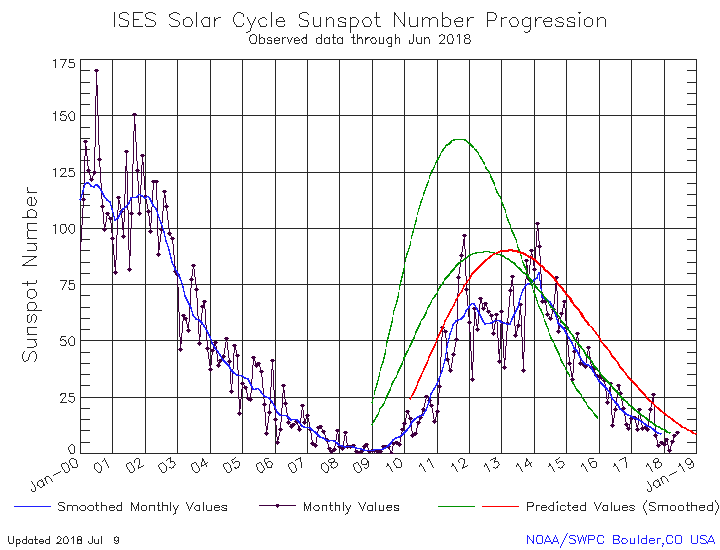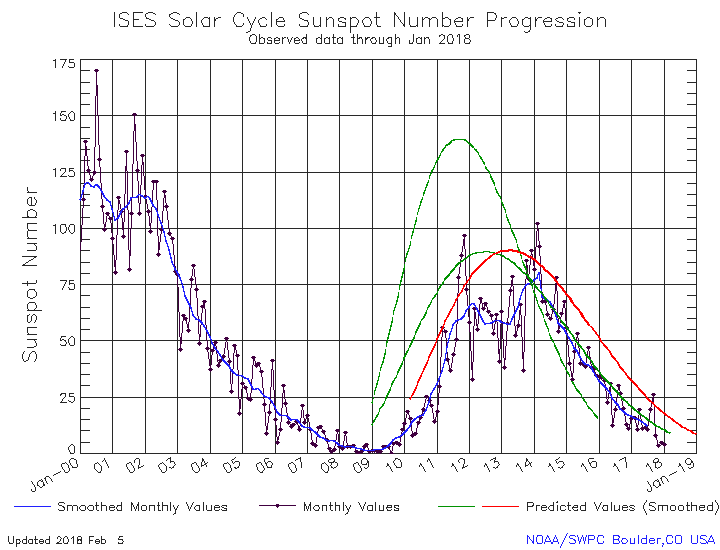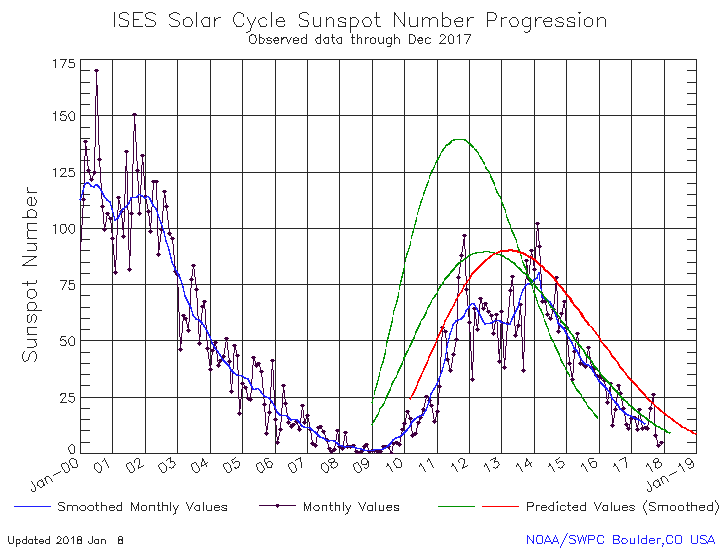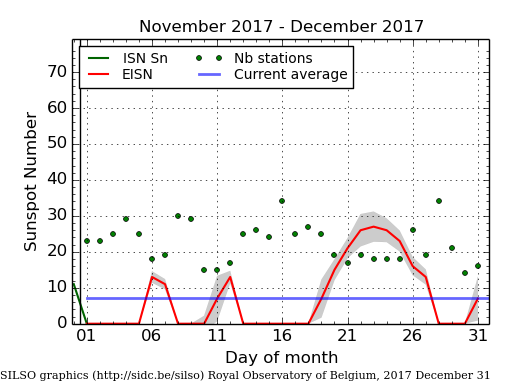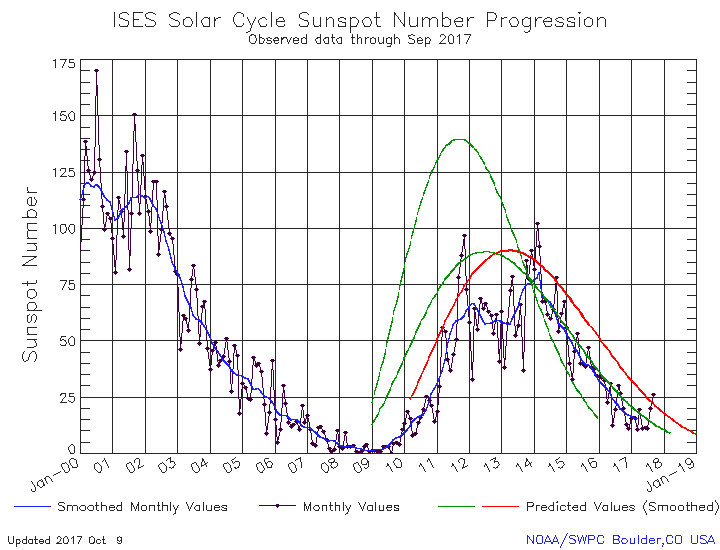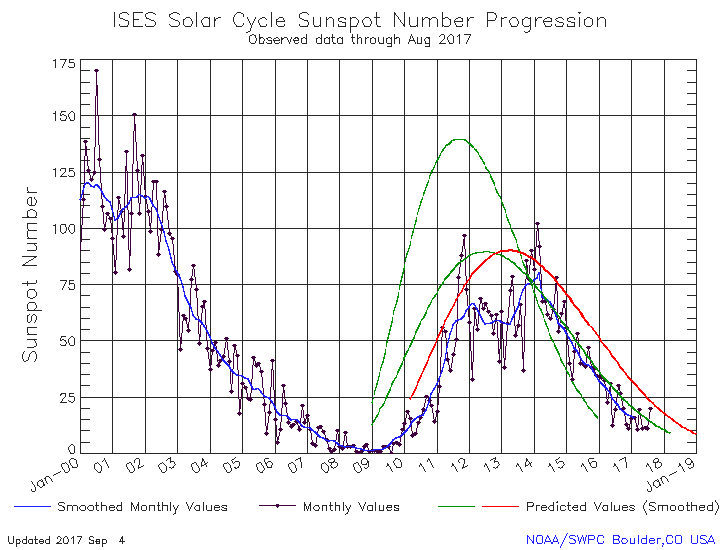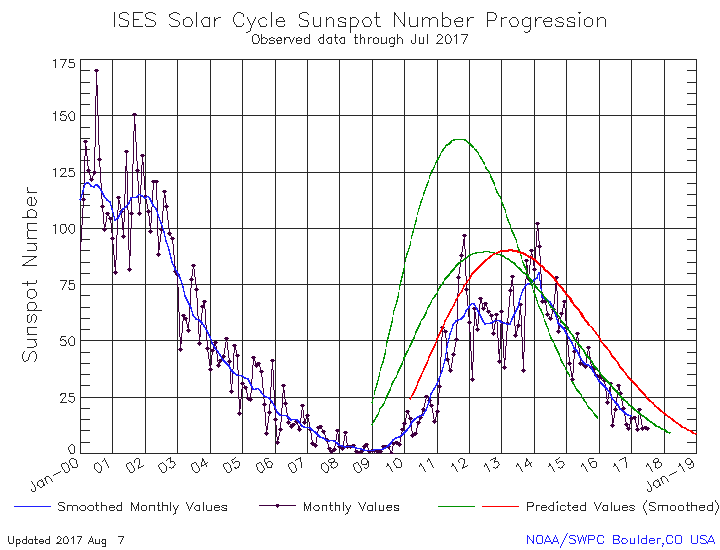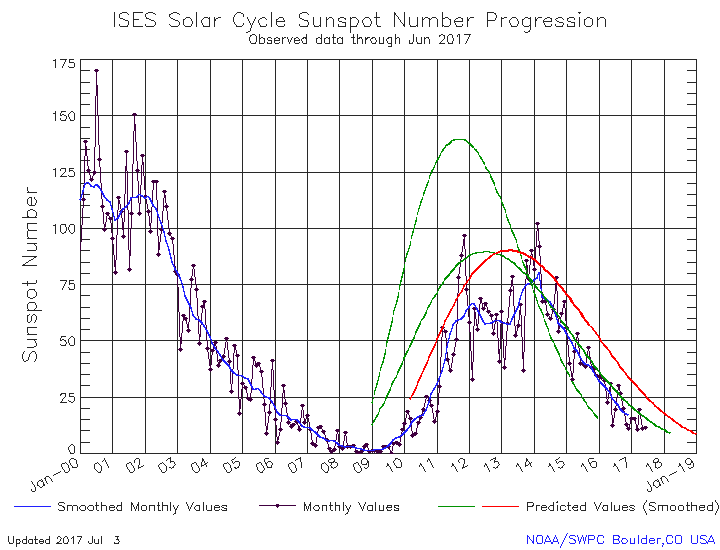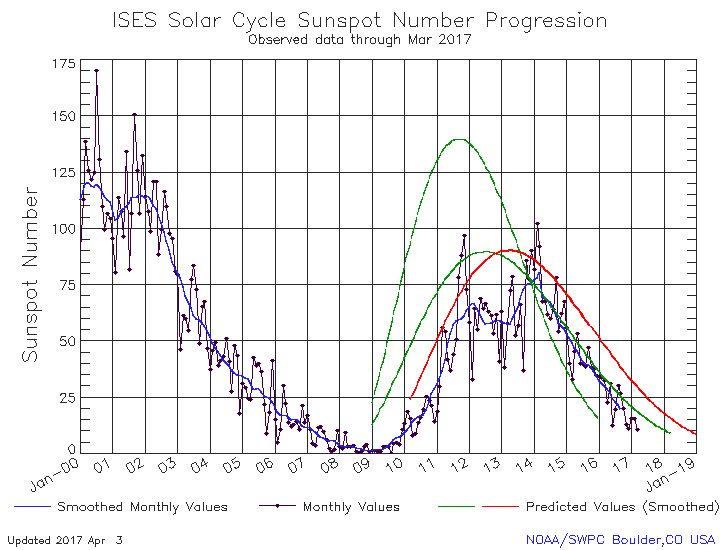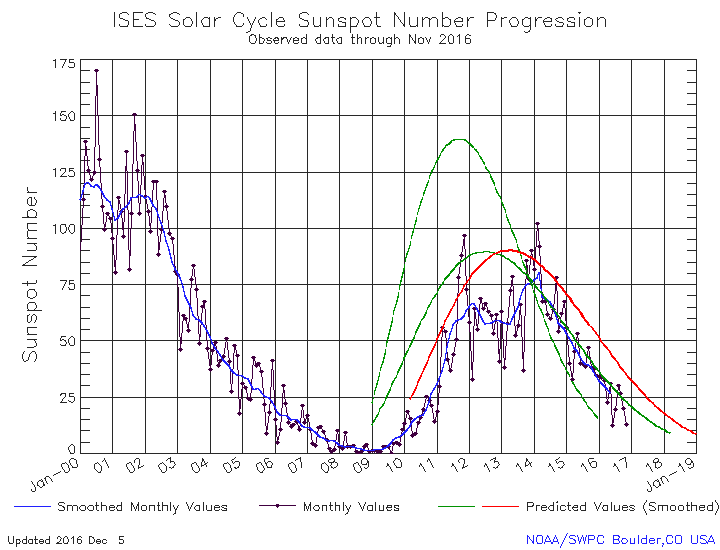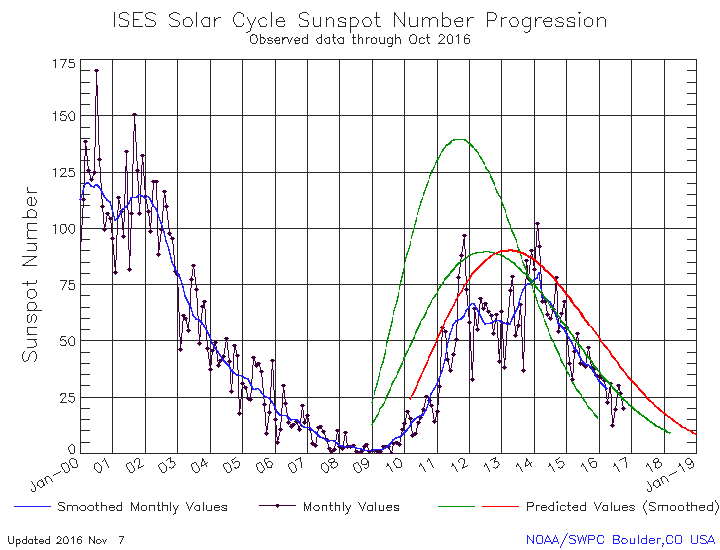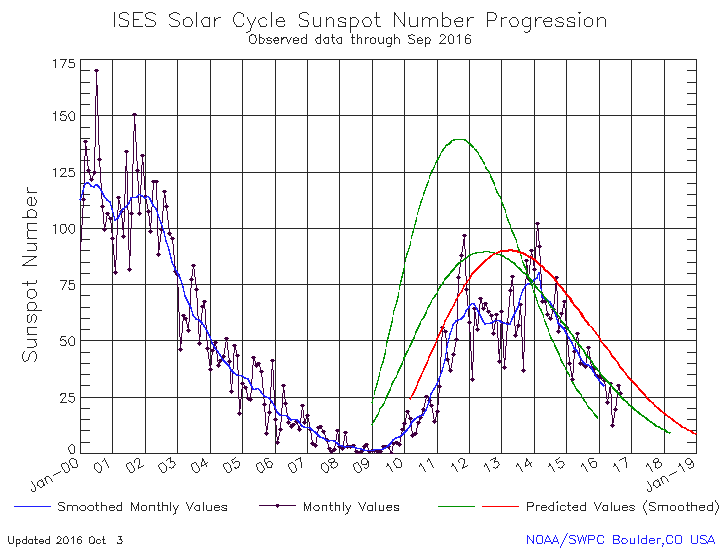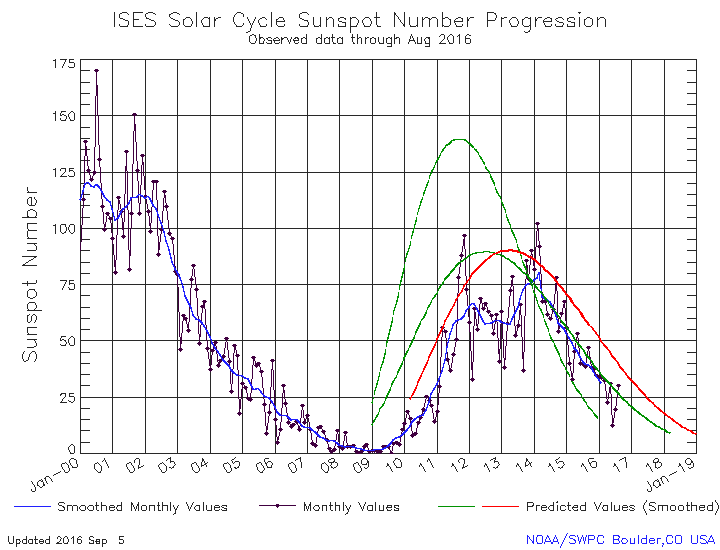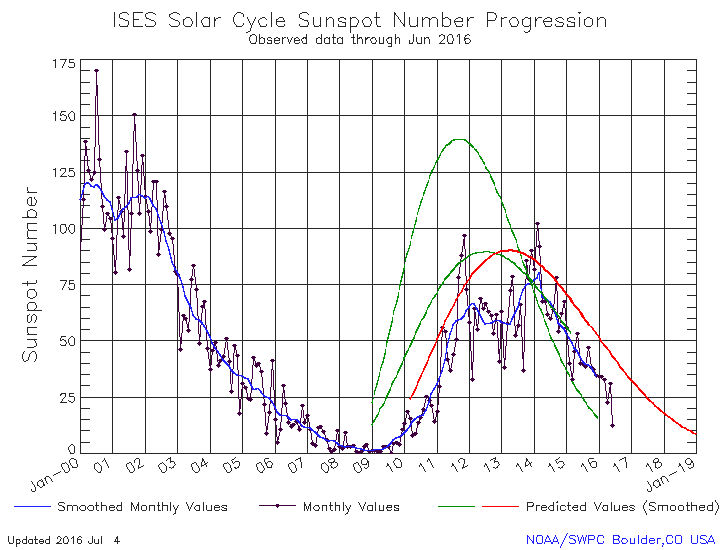The past month was the most inactive month for sunspots since the middle of 2009, when the last solar minimum was just ending and the Sun was beginning its ramp up to solar maximum.
NOAA on Sunday posted its monthly update of the solar cycle, covering sunspot activity for November. As I have done every month since 2010, I have posted that graph below, with annotations.

The graph above has been modified to show the predictions of the solar science community. The green curves show the community’s two original predictions from April 2007, with half the scientists predicting a very strong maximum and half predicting a weak one. The red curve is their revised May 2009 prediction.
I have also added a straight yellow line near the bottom of the graph, indicating how the lack of activity this past month corresponds with the lack of activity in the summer of 2009, just when that unusually long and deep solar minimum was beginning to end.

To get an idea how few sunspots were seen in November, the graph on the right, produced by SILSO (Sunspot Index and Long-term Solar Observations) on December 1, shows only 10 days during the entire month when any sunspots were active on the Sun’s visible hemisphere. And even those sunspot were few and weak, resulting in tiny sunspot numbers total.
Nor is December looking any different, with no sunspots recorded so far, four days into the month.
The plunge to solar minimum continues to appear to be happening faster than normal. At this pace, solar minimum will arrive in early 2018, making this one of the shortest solar cycles on record. That in itself would be unprecedented, as short cycles in the past have always accompanied very active solar maximums, not weak maximums like the maximum we have just seen.
I still expect the ramp down to solar minimum to slow down and stretch out to 2019, as would be more normal, but I also would not bet any money on this expectation, at this point.
The big question remains: Will the solar cycle continue as normal after this upcoming solar minimum, or will we instead see our first grand minimum since the Maunder Minimum in the 1600s, a period lasting for about a century with no obvious sunspots that also corresponded to the Little Ice Age?

